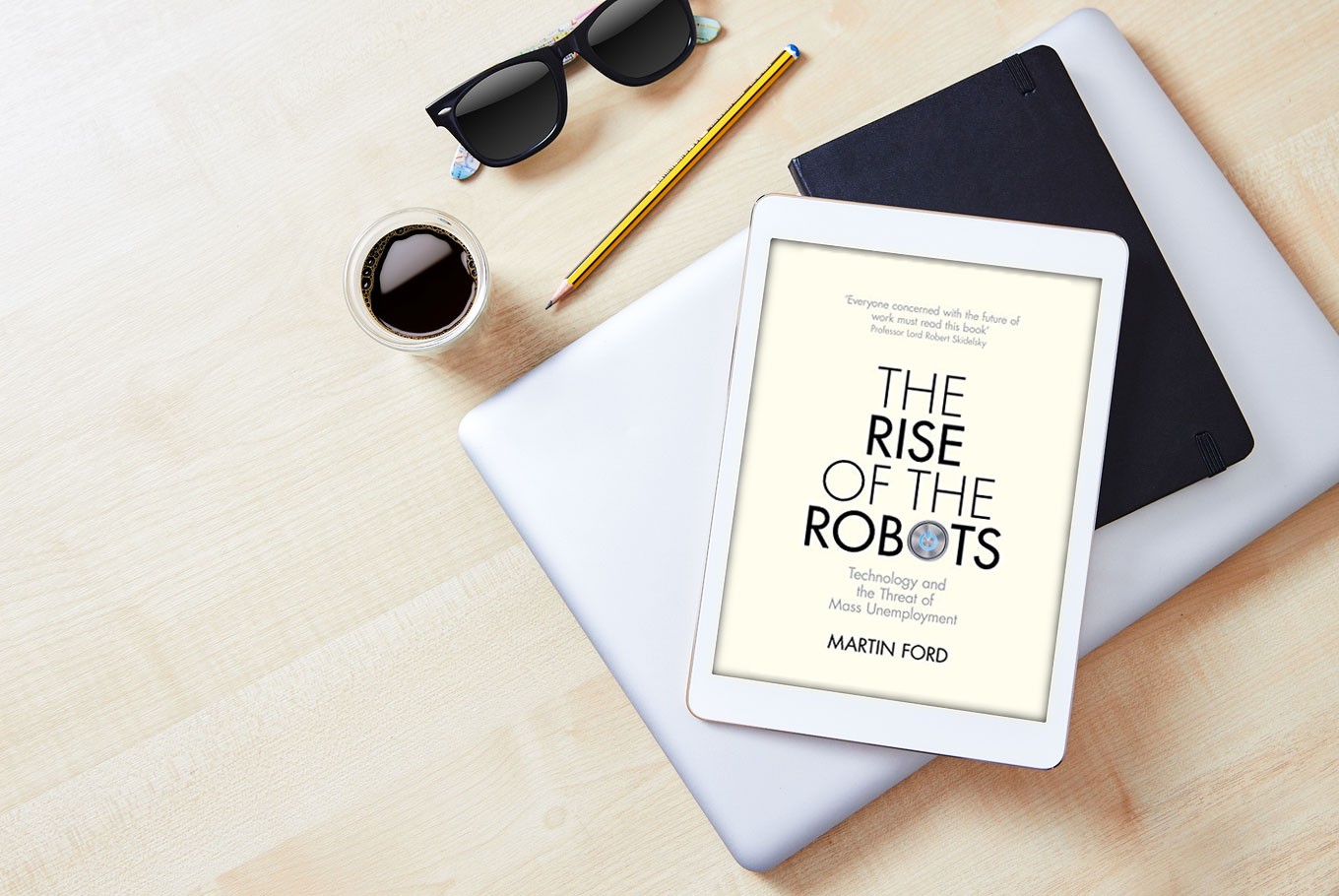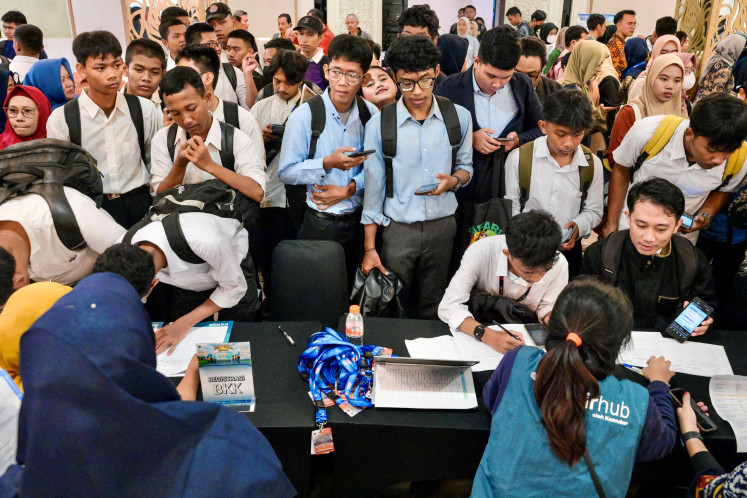Popular Reads
Top Results
Can't find what you're looking for?
View all search resultsPopular Reads
Top Results
Can't find what you're looking for?
View all search resultsBook Review: Robots are stealing our jobs
The Rise of the Robots is a book that discusses the problem of unemployment. In contrast to common sense, which suggests that technology will improve productivity, the advance of automatic technology has started to grind a number of jobs, while manual technology is truly helpful in handling difficult tasks for humans. Yet, computerized machinery has started to replace human labor completely.
Change text size
Gift Premium Articles
to Anyone
P
robably no one ever imagined that one day a machine would be able to write an article without human intervention. Well guess what, it has already happened. A computer program called StatsMonke was used to generate an automatic sports report about game facts in American League baseball. A single machine was able to handle a task that would otherwise involve a number of writers.
This kind of technology is good for business, but it does create social concerns. Why? Martin Ford’s answer is: because automatic machines are reducing human productivity, thus creating deeper inequality.
The Rise of the Robots is a book that discusses the problem of unemployment. In contrast to common sense, which suggests that technology will improve productivity, the advance of automatic technology has started to grind a number of jobs, while manual technology is truly helpful in handling difficult tasks for humans. Yet, computerized machinery has started to replace human labor completely.
(Read also: Reward your ears: 5 gadgets to liven up your music)
Slowly but surely, automatic machines are replacing humans. At first, machines started to handle routine jobs. Although they are efficient, they also problematic. Routine jobs are often considered a safety net in job creation, as they offer low-paid work opportunities. When automatic technology started to invade the service sector, the problems became even clearer.
Try to imagine how many jobs were lost when employers started to consider using vending machines and automatic conveyors to reduce the number of waiters and waitress. In fact, this has been applied in several food franchises. Ford mentions that Japan’s Kura sushi restaurant has applied a full automatic sushi stall, including in its kitchen. As a result, Kura has been able to sell sushi plates for just US$1, which is more affordable than its competitors.
The advance of artificial intelligence has reached its applied technology readiness. An early development of applied artificial technology can be traced back to when Deep Blue, a computer program designed by IBM, defeated grand master Gary Kasparov in a chess match broadcast worldwide in 1997. Years after the event, digital algorithms have continued to advance. The fourth chapter of the book describes those developments, opening with the introduction of the creative computer writer.
The advance of digital algorithms in creating a creative machine was the shocking fact that Martin Ford was able to deliver. No employment sectors are immune to automatic machinery penetration, including jobs that require creative thinking. Currently there are three axes of technological advances, which open possibilities for further developments in automatic machines, namely artificial intelligence, data banks and cloud computation. The combination of these three has created several innovations in the use of technology in the employment sector that were previously thought to be impossible without the real-time presence of human creativity.
On the contrary, automatic machines have been applied in education and health institutions for several creative tasks, including measurements, diagnostics and even creating scientific equations and suggesting medical prescriptions. Those tasks became possible by collecting previous research and medical data, then decoding it into a database that provided a stock of “knowledge” for the machine.
Despite its complicated mechanism, “creative” machine protocols are quite simple. First, a machine scans the input with its censor mechanism, then it continues to match the data input with its database, and finally composes an equation or prescription based on the comparison between the input and the database. The process is actually similar when an identical task is given to someone. The only difference is that the machine can do it faster.
(Read also: New co-working space aims to build user-driven communities)
The technology narrative presented by Ford in the book argues that there is ambivalence surrounding the impact of technology on productivity. On one side, the advance of automatic machines has helped to ease many aspects of human life. Automatic machines have also increased business efficiency in terms of cost and time. But on the other side, automatic technology has contributed to sources of mass employment risk and plummeting human capital productivity. The replacement of human labor with machines has become more acute. The use of machines has shifted from being a mere tool to a productive asset.
In my opinion, investing in technological capital is different from investing in human capital. Both investments are aimed at increasing productivity. Nevertheless, investing in human capital also means creating consumption, as labor is also a consumer. The replacement of human labor with automatic machines has caused a fall in consumption rates.
In Ford’s point of view, the widening gap in inequality has been caused by a blatant use of automatic technology. Technology is the driving factor that has generated an imbalance between the rise of business revenue and the plummeting labor productivity.
This book can be considered an effort to bridge the geeks of technological innovations with the complexity of social and economic concerns.
Title: The Rise of the Robots: Technology and the Threat of Mass Unemployment
Author: Martin Ford
Published: 2015
***
Umar Baihaqki is a lecturer of sociology at Jakarta State University. He covers organizational sociology, Indonesian social problems and development management. He obtained his BA and Master’s in sociology from the University of Indonesia. His research interests are sociology for work, philanthropy and social organizations.
---------------
Interested to write for thejakartapost.com? We are looking for information and opinions from experts in a variety of fields or others with appropriate writing skills. The content must be original on the following topics: lifestyle ( beauty, fashion, food ), entertainment, science & technology, health, parenting, social media, and sports. Send your piece to community@jakpost.com.











